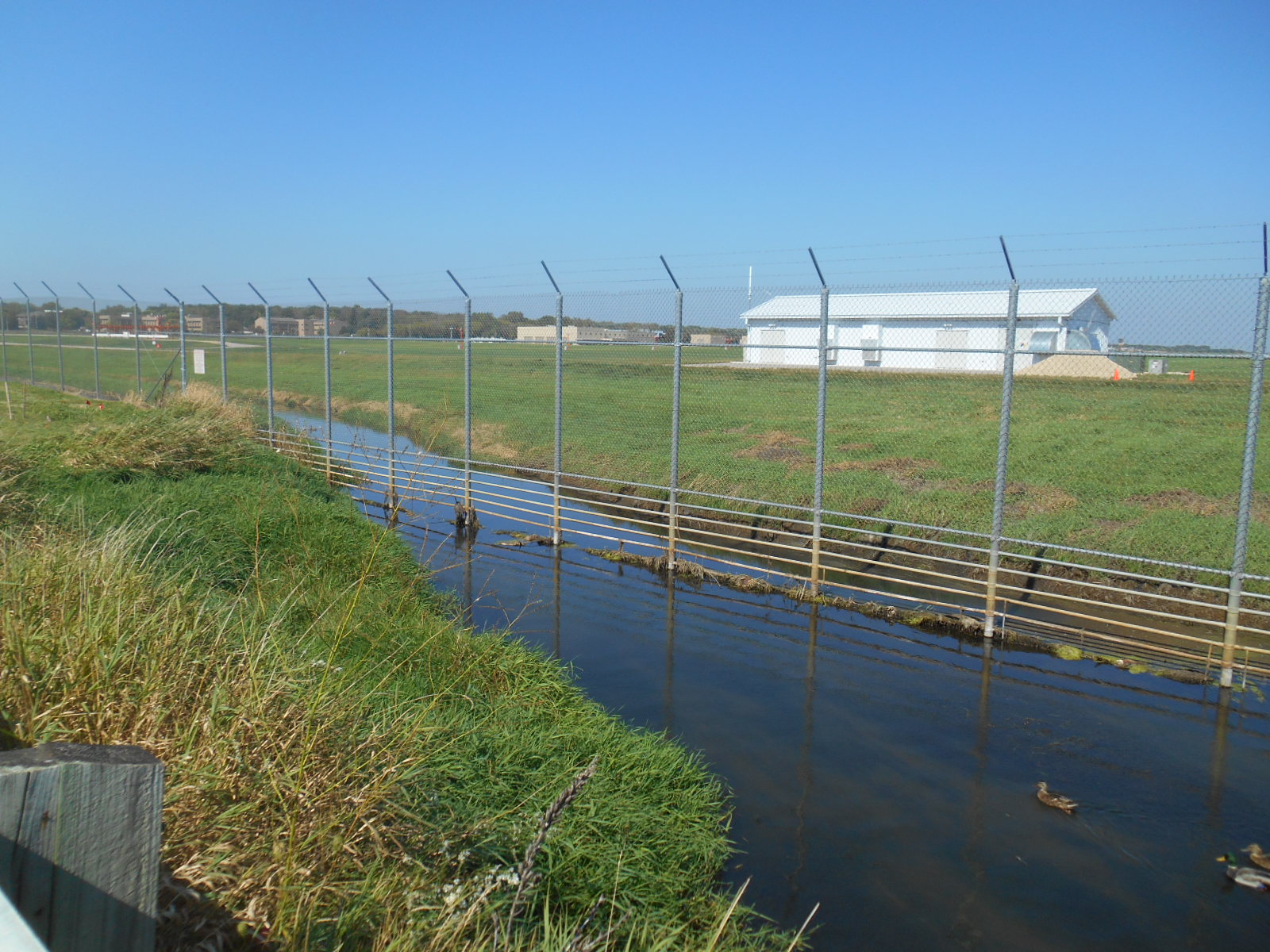Starkweather Creek flowing from the Dane County Regional Airport
By Chris Hubbuch, Wisconsin State Journal
The Department of Natural Resources says an experimental technology has failed to keep so-called “forever chemicals” from the Madison airport out of Madison’s lakes and streams, but county officials say they need more time to test it.
In May, after tests showed stormwater from the airport contained high levels of hazardous PFAS compounds, Dane County announced plans to test a system of booms and “bioavailable absorbent media” — also known as BAM — to treat water draining into Starkweather Creek.
In letters sent Thursday to city and county officials, the DNR said the treatment “has not proven to be successful in reducing PFAS concentrations” in water from the outfall.
The DNR has given the city and county until April 16 to come up with a new plan to keep PFAS from leaving the property.
Airport spokesman Michael Riechers provided a written statement saying “comprehensive results are not yet available,” for the project, but preliminary results are “promising.”
“However, as the process continues to be reengineered and refined, additional testing is required to determine its scalability and effectiveness in this particular environment,” Riechers said. “The cleanup technology being tested is working on other sites and may be a feasible solution at the airport.”
Riechers said the county and its partners continue to assess the feasibility of using the technology for interim mitigation and long-term remediation and have yet to spend all of the $15,760 set aside for the BAM treatment.
“This is a results-driven process and the technology is continually being refined to deliver more consistent results,” Riechers said. “As such, there isn’t a specific date by which we can confidently say results will be finalized.”
Little is known about the experimental treatment which, according to the manufacturer, Orin Technologies, uses a honeycomb-type substance made mostly of carbon and derived from “a proprietary blend of organic materials” to soak up and eliminate biodegradable compounds. The county hasn’t clarified how the technology works with PFAS, which don’t break down naturally.
No results have been posted to the DNR’s online spills database.
Christine Haag, director of the DNR’s remediation and redevelopment program, said the DNR’s assessment of the technology was based on conversations with airport staff who are carrying out the tests.
“None of the data from the BAM technology has been submitted to DNR,” Haag said.
Madison city council member Syed Abbas, whose district includes neighborhoods around the airport, said the county has not provided the council with information either.
“We did not receive any information about how it is working, how much it costs,” Abbas said.
Dane County Supervisor Yogesh Chawla, who represents the district south of the airport where Starkweather Creek empties into Lake Monona, said he also has not received information about the test.
State officials last year warned people to limit consumption of fish from Lake Monona because of elevated levels of PFAS, which accumulates in the body and has been linked to cancer and other diseases.
Just last week the DNR reported that PFAS have been found in all five of Madison’s lakes — with the highest levels found in those downstream from Starkweather Creek, which the agency said confirmed suspicions that the airport is the primary source of contamination.
The DNR is now testing fish from each of the lakes.
PFAS have been found in groundwater beneath the airport and in stormwater draining into Starkweather Creek at concentrations thousands of times higher than recommended health standards.
In June 2018, the DNR notified Dane County, the city of Madison and the Wisconsin Air National Guard that they share responsibility for the contamination at sites used for firefighter training between the 1950s and 1980s.
But so far the BAM pilot is the only cleanup effort undertaken, according to information posted to the DNR’s spills database.
Dane County has budgeted $200,000 this year to address PFAS contamination at the airport, and has agreed to pay engineering firm Mead and Hunt up to $800,000 for remediation. The city council last year allocated $50,000 for PFAS “testing and planning” around the airport.

